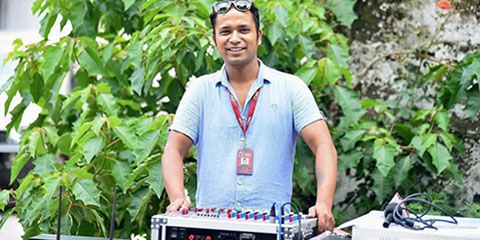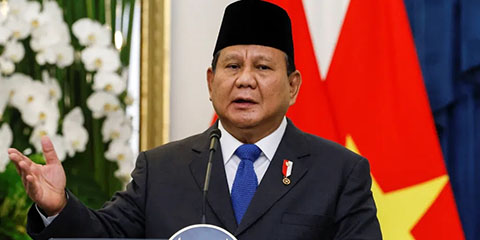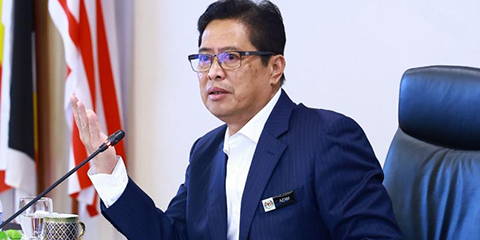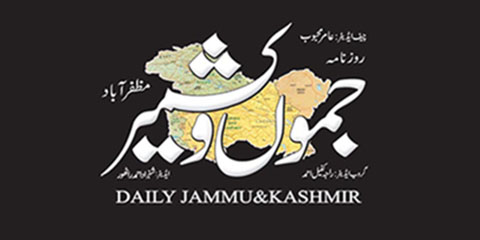JournalismPakistan.com | Published October 26, 2024 at 12:01 pm | Anila Haq
Join our WhatsApp channel
ISLAMABAD—South Asia is experiencing unprecedented media growth, primarily driven by young, tech-savvy populations and an ever-expanding digital infrastructure. Traditional media—TV, radio, and newspapers—continues to have a significant presence; however, digital and social media are quickly gaining dominance. According to industry reports, internet penetration in the region has seen double-digit growth in recent years, allowing for better access to news, entertainment, and content creation platforms. This landscape presents exciting new avenues for investment, with international media companies increasingly entering the South Asian market to tap into its vast potential.
Key Drivers of Media Growth in South Asia
a) Digital Transformation and Internet Accessibility
Digital transformation is at the core of media growth across South Asia. Countries like India, Bangladesh, and Pakistan have witnessed substantial mobile and internet usage increases, with government-led initiatives like India’s Digital India Program aiming to make digital access available to all. Mobile journalism and video content, in particular, are seeing remarkable popularity, with mobile-first audiences consuming news innovatively.
b) Growing Youth Demographics
With a significant portion of the population under 30, South Asia has one of the world’s largest youth populations. This young audience is not only more digitally active but also more inclined toward consuming content on social media and digital platforms. Consequently, media outlets are shifting to cater to this demographic by creating quick, shareable, and visually engaging content.
c) Expanding Media Startups
The region has become a breeding ground for media startups focused on everything from hyper-local journalism to tech-based content solutions. In Pakistan, platforms like Soch and Tabdeeli have emerged, while in India, The Quint and Scroll.in are transforming digital journalism. These startups often focus on producing fact-based, issue-oriented content and exploring revenue models like subscription and ad-based monetization.
Opportunities in South Asia’s Media Markets
a) Foreign Investment and Market Expansion
The potential for media investment in South Asia is immense. International media giants like Netflix, Amazon Prime, and even smaller news syndicates are targeting South Asian markets. The expansion allows these companies to benefit from a region with a collective population of over 1.8 billion. As these companies localize content and advertising strategies, they’re setting up a new wave of competition and collaboration with local media providers.
b) Increased Demand for Local Content
There is a growing demand for locally relevant content across languages, cultures, and topics. This has spurred the development of original series, regional news platforms, and digital-first magazines targeting niche audiences. In India, for example, digital platforms are seeing strong viewer engagement with Hindi, Tamil, Bengali, and other regional language content.
c) Rise of Freelance and Independent Journalists
As the media landscape diversifies, freelance and independent journalism is becoming integral to South Asia’s media fabric. Journalists now have the opportunity to operate independently, covering under-reported stories and offering alternative viewpoints without editorial constraints. Online platforms like Patreon, Substack, and YouTube are providing ways for independent journalists to sustain themselves financially.
Challenges Facing South Asian Media Markets
a) Press Freedom and Political Interference
Political pressures continue to impact press freedom across South Asia, with journalists facing intimidation, legal challenges, and at times, physical harm. In Pakistan, for instance, censorship and legal threats create barriers to independent journalism. Similarly, in Bangladesh, restrictive laws and surveillance limit the media's ability to cover critical stories objectively.
b) Financial Instability and Monetization Issues
Many South Asian media organizations rely on traditional advertising models that are proving unsustainable in the digital age. While subscription models have gained traction in India, the lack of disposable income in some parts of South Asia remains a challenge. This financial instability affects the quality and depth of journalism, as smaller outlets struggle to maintain consistent revenue streams.
c) Digital Literacy and Misinformation
With rapid digital adoption, misinformation has become a pressing issue. Many South Asian countries face challenges in digital literacy, with a portion of the population lacking the skills to critically evaluate online information. Media organizations are investing in fact-checking, but the sheer volume of misinformation presents ongoing challenges.
Future Trends and Prospects
a) Embracing AI and Technology in Journalism
AI and machine learning are set to play a more significant role in South Asia’s media landscape. Automated news production, audience analysis, and content recommendation systems are becoming more common, helping media outlets personalize content and improve user experience.
b) Diversification of Revenue Models
As ad-based revenue models become less sustainable, South Asian media outlets are exploring alternatives like paid subscriptions, partnerships, branded content, and crowdfunding. This trend is expected to continue, with more companies experimenting with different combinations to generate revenue.
c) Strengthening Regional Collaboration
To counter censorship, misinformation, and limited resources, media organizations across South Asia are finding value in cross-border collaboration. This collaborative approach fosters shared resources, joint investigative journalism, and region-wide initiatives to promote press freedom and ethical journalism.
South Asia’s media markets are undergoing a dynamic transformation, propelled by digital innovations, a vibrant young demographic, and increasing investment interest. While challenges like censorship and financial constraints persist, the future is promising for media across the region. As local and international media entities continue to explore emerging trends, South Asia’s media landscape will likely be reshaped in ways that benefit both consumers and content creators alike.

April 01, 2025: Photojournalist Suresh Rajak was burned alive while covering a violent protest in Kathmandu. The IFJ and its affiliates condemn the attack and call for an urgent investigation to hold the perpetrators accountable.

April 01, 2025: Assam Police arrested digital journalist Dilwar Hussain Mozumder for covering a protest against alleged corruption at Assam Co-Operative Bank. Media organizations have condemned the arrest, calling it an attack on press freedom.

March 27, 2025: Several journalists were attacked and forced to delete footage while covering anti-military protests in Indonesia. CPJ urges authorities to hold the perpetrators accountable.

March 23, 2025: The severed pig’s head sent to Indonesia’s leading news outlet, Tempo, signals escalating media intimidation amid President Prabowo Subianto’s attacks on foreign-funded media.

March 14, 2025: The Committee to Protect Journalists (CPJ) urges Maharashtra authorities to ensure their AI-driven media monitoring plan does not undermine press freedom. The initiative, which classifies news as positive or negative, raises concerns over government overreach and self-censorship.

March 11, 2025: Indian journalist and RTI activist Raghvendra Bajpai was shot dead in Uttar Pradesh on March 8 in a targeted attack. Media organizations, including IFJ, NUJ-I, and IJU, demand justice and an urgent investigation into his murder.

March 06, 2025: The arrest of Malaysiakini journalist B. Nantha Kumar by the Malaysian Anti-Corruption Commission has raised concerns over press freedom. The IFJ and NUJM call for a transparent investigation amid allegations of bribery and ongoing state harassment of independent media.

February 28, 2025: The Dewan Rakyat passed the Malaysian Media Council Bill on February 26, marking a historic step toward independent media regulation. Supported by journalists, unions, and media bodies, the council aims to set ethical standards, improve working conditions, and reform restrictive laws. The NUJM and IFJ celebrate this milestone while urging independence and adequate resourcing for the council.

April 11, 2025 Sindhi journalist AD Shar was brutally murdered in Khairpur, Sindh. His body was found dumped on Handiyari Link Road. PFUJ has declared a three-day mourning period and demanded justice.

April 10, 2025 The Azad Jammu and Kashmir government has filed a case against The Daily Jammu & Kashmir and its staff for alleged fake news, drawing condemnation from PFUJ and IFJ, who demand immediate withdrawal of the FIR and an end to media repression in Pakistan.

April 08, 2025 Journalist Arzoo Kazmi alleges that Pakistan's state agencies, including the FIA, have blocked her CNIC, passport, and bank account while threatening her. She calls it a direct attack on journalism.

April 07, 2025 The Islamabad High Court has directed IG Islamabad to produce journalist Ahmad Noorani’s missing brothers, as the Ministry of Defence denies custody. SIM activity was traced in Bahawalpur, and investigations into their suspected abduction continue.

April 07, 2025 Journalist and Raftar founder Farhan Mallick has been granted bail by a Karachi court in a case concerning anti-state content aired on his YouTube channel. He still faces separate charges related to an alleged illegal call center and data theft.